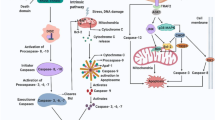Abstract
SEVERAL proteins implicated in the regulation of cellular responses to mitogenic stimuli contain a common non-catalytic domain, SH2 (for src-homologous domain 2), that mediates their interaction with activated tyrosine protein kinases. Here we report that p95vav, a proto-oncogene product specifically expressed in cells of the haematopoietic system, contains an SH2 domain and is a substrate for tyrosine protein kinases. Exposure of quiescent NIH3T3 cells ectopically expressing p95vav to either epidermal or platelet-derived growth factors induces the rapid phosphorylation of this protein on tyrosine residues. Activation of the receptors for these growth factors by their cognate ligand results in their association with p95vav, a process mediated by its SH2 domain. In T cells, co-activation of the T-cell receptor and the accessory CD4 cell-surface protein also results in the phosphorylation of the endogenous p95vav protein in tyrosine residues. Phosphorylation of p95vav is rapid, transient and precedes the appearance of most other phosphotyrosine-containing proteins. In addition to the SH2 domain, p95vav contains structural motifs not found in other tyrosine kinase substrates. One such motif is a helix–loop–helix/leucine zipper-like domain which shares some sequence similarity with these motifs in the Myc and Max proteins. Deletion of the helix–loop–helix-like motif causes oncogenic activation of p95vav. These results indicate that p95vav is a new type of signal transduction molecule and suggest a possible role for this protein in the transduction of tyrosine phosphorylation signalling into transcriptional events.
Similar content being viewed by others
References
Katzav, S., Martin-Zanca, D. & Barbacid, M. EMBO J. 8, 2283–2290 (1989).
Coppola, J., Bryant, S., Koda, T., Conway, D. & Barbacid, M. Cell Growth Differ. 2, 95–105 (1991).
Katzav, S., Cleveland, J. L., Heslop, H. E. & Pulido, D. Molec. cell Biol. 11, 1912–1920 (1991).
Koch, C. A., Anderson, D., Moran, M. F., Ellis, C. & Pawson, T. Science 252, 668–674 (1991).
Klausner, R. D. & Samelson, L. E. Cell 64, 875–878 (1991).
Margolis, B. et al. Nature 356, 71–74 (1992).
Bolen, J. B. Cell Growth Differ. 2, 409–414 (1991).
Sefton, B. M. Oncogene 6, 683–686 (1991).
Hatakeyama, M. et al. Science 242, 1523–1528 (1991).
Horack, I. D. et al. Proc. natn. Acad. Sci. U.S.A. 88, 1996–2000 (1991).
Samelson, L. E., Phillips, A. F., Luong, E. T. & Klausner, R. D. Proc. natn. Acad. Sci. U.S.A. 87, 4358–4362 (1990).
Mayer, B. J. & Hanafusa, H. Proc. natn. Acad. Sci. U.S.A. 87, 2683–2642 (1990).
Sakane, F., Yamada, K., Kanoh, H., Yokoyama, C. & Tanabe, T. Nature 344, 345–348 (1990).
Beck, T. W., Huleihel, M., Gunnell, M., Bonner, T. I. & Rapp, U. R. Nucleic Acids Res. 15, 595–609 (1987).
Ahmed, S. et al. Biochem. J. 272, 767–773 (1990).
Lüscher, B. & Eisenman, R. N. Genes Dev. 4, 2025–2035 (1990).
Blackwood, E. M. & Eisenman, R. N. Science 251, 1211–1217 (1991).
Prendergast, G. C., Lawe, D. & Ziff, E. B. Cell 65, 395–407 (1991).
Klein, R., Jing, S., Nanduri, V., O'Rourke, E. & Barbacid, M. Cell 65, 189–197 (1991).
Boyle, W. J., Van Der Greer, P. & Hunter, T. Meth. Enzym. 201, 110–149 (1991).
Ledbetter, J. A., Schieven, G. L., Kuebelbeck, V. M. & Uckun, F. M. Blood 77, 1271–1282 (1991).
Author information
Authors and Affiliations
Rights and permissions
About this article
Cite this article
Bustelo, X., Ledbetter, J. & Barbacid, M. Product of vav proto-oncogene defines a new class of tyrosine protein kinase substrates. Nature 356, 68–71 (1992). https://doi.org/10.1038/356068a0
Received:
Accepted:
Issue Date:
DOI: https://doi.org/10.1038/356068a0
- Springer Nature Limited
This article is cited by
-
Nuclear Vav3 is required for polycomb repression complex-1 activity in B-cell lymphoblastic leukemogenesis
Nature Communications (2022)
-
TGFβ promotes mesenchymal phenotype of pancreatic cancer cells, in part, through epigenetic activation of VAV1
Oncogene (2017)
-
Identification of a Vav2-dependent mechanism for GDNF/Ret control of mesolimbic DAT trafficking
Nature Neuroscience (2015)
-
VAV2, a guanine nucleotide exchange factor for Rac1, regulates glucose-stimulated insulin secretion in pancreatic beta cells
Diabetologia (2015)
-
Rho guanine nucleotide exchange factors: regulators of Rho GTPase activity in development and disease
Oncogene (2014)





